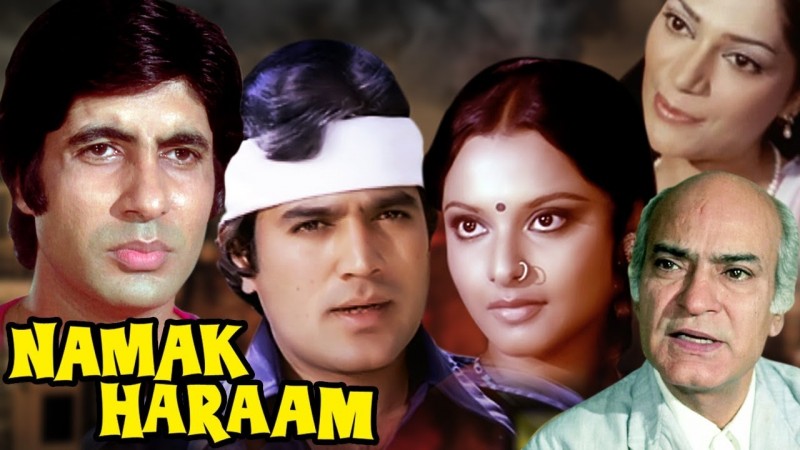
Hrishikesh Mukherjee's film "Namak Haraam," from 1973, is remembered as a pivotal moment in Bollywood history because of its masterful cinematography as well as the dynamics it captured behind the scenes. Amitabh Bachchan and Rajesh Khanna, two of the greatest actors of their era, shared the screen for the final time in this movie. The complex story of their growing rivalry, the moving setting of "Namak Haraam," and the criticism that marked a bittersweet end to their on-screen interactions are all explored in this article.
In the 1970s, Amitabh Bachchan and Rajesh Khanna were two powerful figures in the film industry. They had become celebrities thanks to their captivating charisma and extraordinary acting abilities. Prior to this, the two had appeared together in movies like "Anand" (1971) and "Bawarchi" (1972), enthralling audiences with their chemistry. 'Namak Haraam' was their final joint project, but despite its brilliant cinematography, a rift had already started to show.
At the same time that Bachchan's star was rising, Rajesh Khanna's power was beginning to wane. Discussions about their divergent approaches to acting, unique personalities, and the upcoming change in the hierarchy of the film business were hot topics in the media and among fans. The atmosphere of competition paved the way for the two actors' escalating rivalry.
Bachchan and Khanna played crucial roles in the movie "Namak Haraam" as friends with opposing worldviews. Their characters' conflict mirrored the conflict between their professional trajectories in real life. The difficulties in their own relationship were unintentionally reflected in the movie's backdrop.
Rajesh Khanna publicly criticized Amitabh Bachchan's performance in the movie "Namak Haraam" after it was released. Khanna's comments were taken as a direct jab at Bachchan's acting skills, and this in-public argument heightened their rivalry. The media gorged on their strife, making headlines out of the real-life drama.
Namak Haraam was marred by the conflict between Bachchan and Khanna. The tension between the two was palpable on screen despite their undeniable acting talent, subtly impacting the friendship that their characters were supposed to share. The narrative of the movie started to reflect the dynamics of real life with an undercurrent of unease.
The film "Namak Haraam" would go down in history for its outstanding acting, its moving themes, and the nuanced characters. The movie also serves as a symbol for the end of the Bachchan and Khanna era of Bollywood, which shared the spotlight. As new actors entered the scene and the dynamics changed, their rivalry served as a metaphor for how the film business has changed.
Looking back, "Namak Haraam" is still an important event in Bollywood history. It perfectly captures the intricacies of conflict and the shifting dynamics within the market. In addition to being a masterful piece of cinema, the movie is remembered for the profound point it unintentionally made about the turbulent relationship between two icons.
The 1973 film "Namak Haraam" serves as a poignant reminder that, despite all the glitz and splendor of the big screen, interpersonal conflicts and rivalries can have unexpected effects on the story. The setting of the movie turned into a blank canvas on which the tensions of a developing rivalry were unintentionally painted. While "Namak Haraam" still stands as a testament to their outstanding acting skills, it also serves as a symbol of the changing trends in the film industry and the bittersweet farewell of two titans whose paths had diverged, leaving an indelible mark on the cinematic landscape.
From Hollywood to Bollywood: 'Abhimaan' (1973) Weaves Indian Dreams Inspired by 'A Star Is Born'
'Mera Joota Hai Japani' Surprises Audiences in Deadpool's Opener